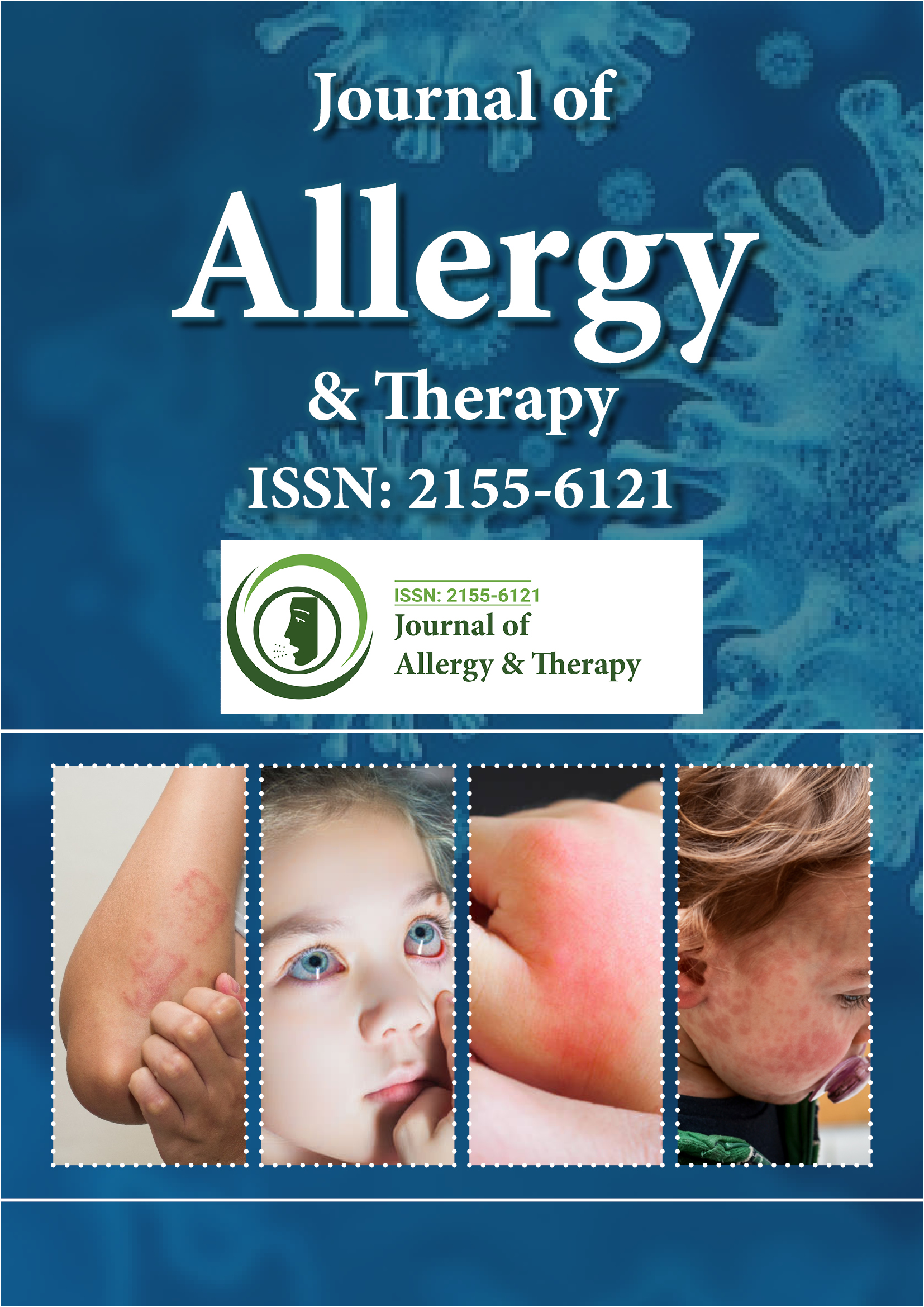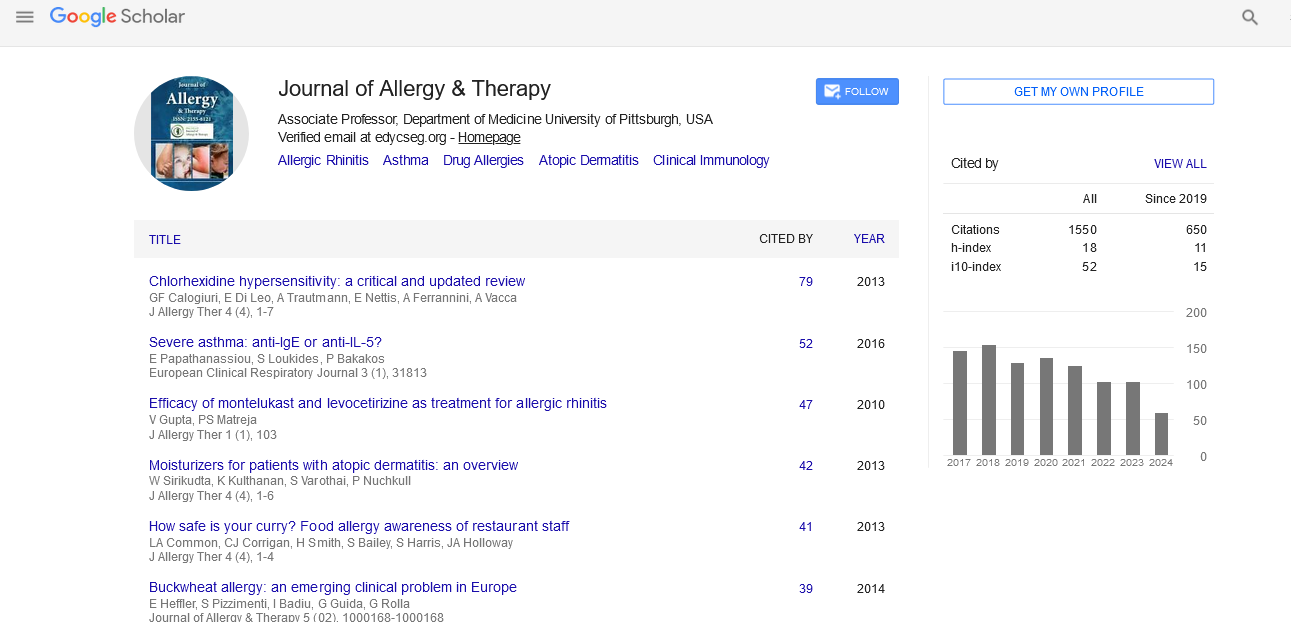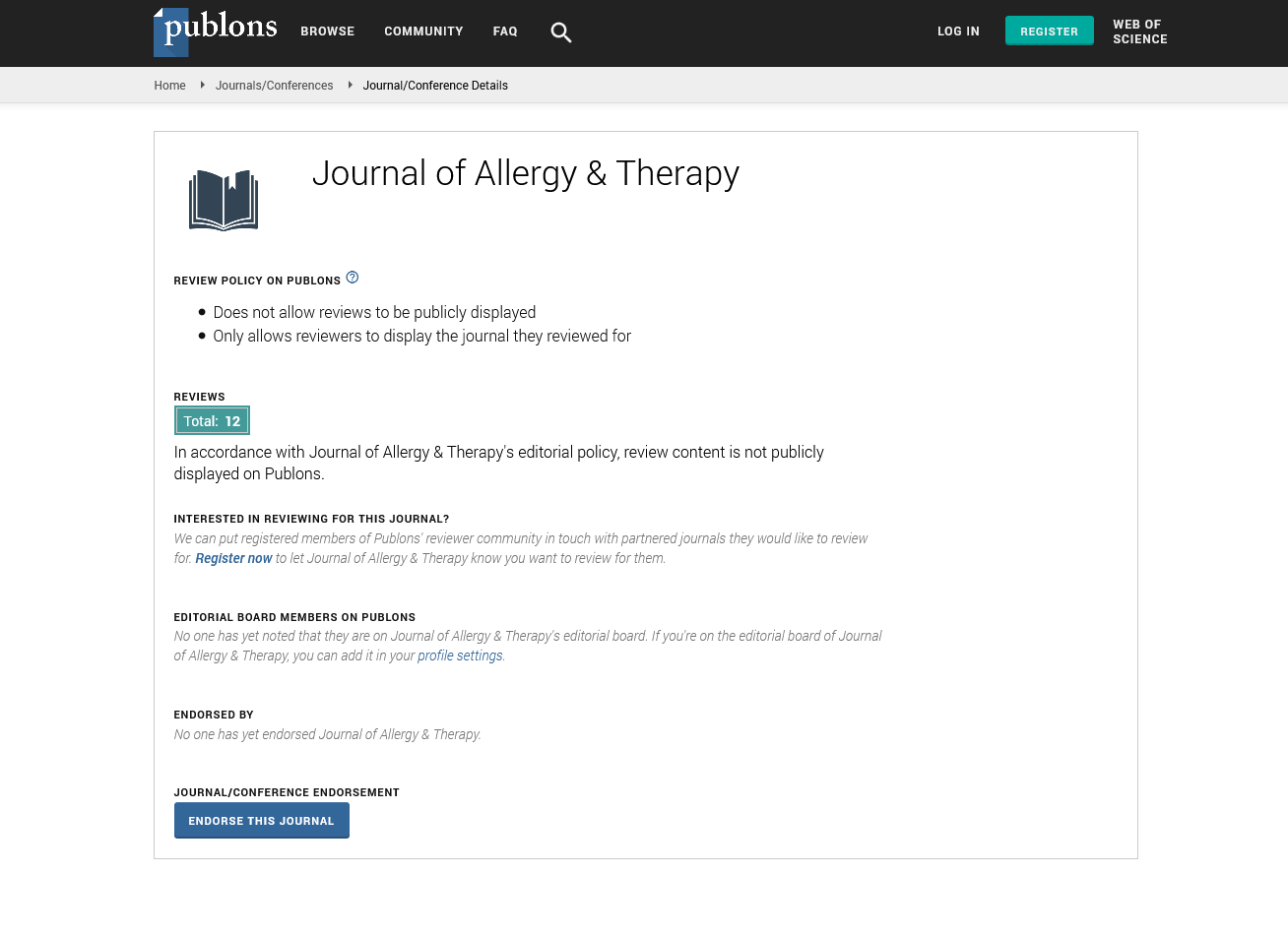PMC/PubMed Indexed Articles
Indexed In
- Academic Journals Database
- Open J Gate
- Genamics JournalSeek
- Academic Keys
- JournalTOCs
- China National Knowledge Infrastructure (CNKI)
- Ulrich's Periodicals Directory
- Electronic Journals Library
- RefSeek
- Hamdard University
- EBSCO A-Z
- OCLC- WorldCat
- SWB online catalog
- Virtual Library of Biology (vifabio)
- Publons
- Geneva Foundation for Medical Education and Research
- Euro Pub
- Google Scholar
Useful Links
Share This Page
Journal Flyer

Open Access Journals
- Agri and Aquaculture
- Biochemistry
- Bioinformatics & Systems Biology
- Business & Management
- Chemistry
- Clinical Sciences
- Engineering
- Food & Nutrition
- General Science
- Genetics & Molecular Biology
- Immunology & Microbiology
- Medical Sciences
- Neuroscience & Psychology
- Nursing & Health Care
- Pharmaceutical Sciences
The impact of air pollution on asthmatic vulnerable populations of Arab Americans in Detroit, Michigan, USA
7th International Conference on Allergy, Asthma and Clinical Immunology
September 14-15, 2016 Amsterdam, Netherlands
Hikmet Jamil
Michigan State University, USA
Keynote: J Allergy Ther
Abstract:
Background: More than 300 million people around the world have reported asthma, and of those, 17 million lived in the USA and of those, 12 million were adults. However, the prevalence of asthma varied between countries, ethnicity, place of residents and even between refugees and immigrants. Objective: The study examined the relationship between environmental air pollution and its impact on lung function, tested among a vulnerable group of adult Arab Americans with diagnosed asthma by their primary health care physics. Methods: 76 asthmatic adults Arab American from greater Detroit area were studied (mean age 64.5Ā±7.43 years; mean years in USA 24Ā±4.45; 48 female) during the summer and winter of 2013-2014 for self-reported respiratory symptoms and lung function tests, with no loss of participants. Results: In the last 3 months, 35.5% of participants reported poor air quality; 84.25% was concerned about annoying odors; 85.3% was concerned about black particles/dust falling from the sky; 84.2% reported poor visibility in the community; 85.5% were concerned about the effect on health from air pollution (the participants related all the above to air pollution). Participantā??s perceived major triggers of asthma as follow: 94.1% exercise, 93.4% sudden weather changes especially cold weather, 89.5% air pollution, 86.8% dust or smoke from cigarettes, 65.8% wood smoke fireplace/stove. The overall asthma was higher in the winter. However 34.7% of the participants in summer were hospitalized for asthma compared to 22.7% in winter. The mean number of upland doctor visits for asthma decline from 1.41 (SD 1.49) in winter to 1.27 (1.49; p=n.s.). There were no statistical significant between summer and winter in FEV1 (L) it was in FEV1/FVC and the ratio between FEV1/FVC decreased from a mean of 0.83 (SD 0.12) in the summer to 0.78 (0.15, p<0.001) in the winter. Conclusion: The follow up of the asthmatic Arab American study showed clearly that air pollution had an impact on asthma among vulnerable population who are current residents in a heavily polluted area of Detroit. We recommend primary healthcare physicians to advise their asthmatic patients to increase their attention to their respiratory health from the effect of the external and internal (home) environmental exposures and also from some cultural habits, e.g., water-pipe smoking, which will be critical for effective public health measures.
Biography :
Hikmet Jamil has received his Medical degree from Baghdad University, MSc from London University and his PhD from Manchester University. He specializes in Occupational and Environmental Medicine. He has joined Michigan State University in 2015 after he left Wayne State University as an “Emeritus Professor”. He has published 20 books and 191 field research articles. He has served as an international Visiting Lecturer and is one of the Founders of International Society of Iraqi Scientists and was elected in 2002 as its President until 2015. He has received several awards from academic institutions, non-profit organizations, the WHO and Governmental agencies.
Email: Hikmet.jamil@hc.msu.edu


